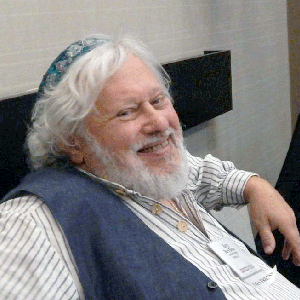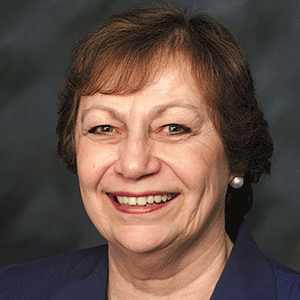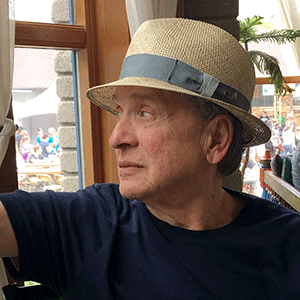 |
 |
 |
| Barry Barkan | Rose Marie Fagan | Jeff Jerebker |
Let’s make good trouble, necessary trouble.
— Human Rights Champion John Lewis, of Blessed Memory
Pioneer Network, our Council of Elders, and Live Oak Institute are launching the Live Oak Project to fuel the revolution to transform every aspect of the nursing home system that is funded and regulated through the Center for Medicare & Medicaid Services (CMS). Clearly, fragmented fixes have only exacerbated the failure of the system that continues to result in the catastrophe of COVID-19 driven nursing home deaths. We intend to transform the whole system, from top to bottom and from the inside out.
At Pioneer Network’s Virtual Gathering, the Live Oak Project will detail our mission, strategy and workplan for our unparalleled, integrated campaign to transform a whole sector of society. Come to our booth in the virtual exhibit hall, and our Facilitated Networking Discussion, From the Campfire to Zoom: A Conversation with Pioneer Network Sages, (FB7) on Thursday, September 3 at 4:30 p.m. ET at Envisioning the Future 2020 to learn the details of our campaign and your potential place within it. At any time, any one of us, or someone we love deeply, may be included among those who will be profoundly affected by the actions we take.
Between now and Envisioning the Future 2020, we invite you to reflect on the Live Oak Project’s Vision and Guiding Principles.
THE LIVE OAK PROJECT VISION
Every great initiative begins with the vision of what we have set out to achieve. This is our vision for the prize upon which we will keep our eyes.
Each person receiving Medicaid who meets the criteria for nursing homes will have the right to choose from a variety of different types of care settings. Long term care homes will be life-affirming communities where people can live out the narrative of their lives with joy and meaning, even as they encounter loss of capacity and the imminence of death; where people come for rehabilitation from a medical event and go home with not just their bodies but their spirits regenerated; where each person has a private room and ample common space to socialize even when physical distancing is required.
Direct care partners will receive equitable compensation and have a career ladder and opportunities for professional advancement; managers on all levels will become servant leaders, empowering everyone to work together to fulfill their potential for well-being and excellent service.
Government will provide realistic funding so each nursing home is a well-run, person-centered community; regulation is both part of a collaborative learning process and actually de-licenses chronically underperforming operations; and new business models provide a countervailing aspiration where profits are earned for the benefit of its residents, staff, and community, as well as its investors.
The very culture of long term care is transformed to render obsolete the ageism, racism, sexism, ableism and virtually every other -ism that permeates the long term care system so young people can look forward to engaging their elders in welcoming environments and the fear of old age begins to be tempered by hope.
LIVE OAK PROJECT GUIDING PRINCIPLES
- The culture that drives the transformation of the system is person centered, cultivates community, and empowers each person and each group of stakeholders.
- Each person who lives in a nursing home or is there for rehabilitation is known as a whole person, who is still growing, still learning, still with potential, with physical, mental, emotional, spiritual and relationship needs.
- Each person in a home is entitled to the full range of human rights, including simple pleasures, risk taking in everyday life, and a voice and choice in the decisions that impact one’s life.
- The physical environment of each home supports at-homeness by providing private rooms, plenty of spacious common areas, healthy air quality, natural light, and easy access to outdoors.
- The system of reimbursement is sufficiently funded to assure high quality care and a meaningful life for each resident or short-stay patient.
- The management culture within each home and each government agency engaged with homes moves from a hierarchical top-down culture to one that is collaborative, transparent, and learning based.
- The regulatory system approaches homes that pursue excellence as partners in quality, and aggressively enforces the full extent of the law with those that are chronically poor performing.
- Direct care workers are well trained; equitably compensated professionals who are valued for what they know and can contribute; related to with dignity and respect; and have a career ladder.
We hope you will join us on September 3 and decide to lend your skills and expertise to realizing the transformation that will benefit ourselves and our loved ones in the years to come.



This is all very interesting, and please “sign me up!” I regret not learning about this sooner. My two observations are:
1. You start at the front door, whereas the need starts much earlier. I would argue for a public health awareness program to teach consumers (we geezers) and their adult advisers about navigating the long term care labyrinth.
2. Why start at the front door? Why isn’t there a triage system, which directs consumers and their adult advisers toward the care options / configurations that make the most sense for them?
I look forward to engaging in this beautiful effort.
On Transforming the Long-Term Care system: These aspirational vision and mission statements describe the type of community we’d all love. How will we achieve the results we aspire to? We hear countless horror stories about care homes, especially in the age of COVID. Nearly every problem identified is attributable to understaffing; there are simply not enough staff to ensure resident health and safety, let alone person-centeredness in all that that entails. Families of nursing home residents tell us this over and over. It’s not an easy issue because it implicates “the bottom line.” Administrators claim they can’t afford to increase staff. When they say this, it’s time for us to insist “Show us the money!”
To transform LTC homes my guiding principles would include:
—that nursing homes use resident acuity including cognitive acuity for a more realistic determination of staffing needs.
—that nursing homes introduce budget transparency, so that all stakeholders (residents, families, staff, funders) can see what the organization’s income is and how is it spent.
—that nursing home pay every worker a living wage. Employees who need to work two jobs to pay their bills can’t bring to a care home the physical or emotional energy needed to care for the sick and the frail.
Thank you for your input and recommendations. I agree substantially with everything you write. However I would be remiss if I didn’t offer a caveat. My past company (Pinon Management) specialized in turning around poor performing nursing homes, both for profit and nonprofit ones. While substandard staffing levels were a problem in some, in almost all cases it was the culture, competency, and leadership style of management that was the underlying cause of poor care. One egregious example involved a state veterans nursing in Colorado. It had received wide spread Immediate Jeopardy deficiencies. Their staffing level was one of the highest in the state. They lacked the culture of caring, appropriate training and education, multi disciplinary communication, inspiration, etc. etc..
I agree totally with your call for financial and budgetary transparency with residents, staff and families as well as community at large. I would add to it also an understanding of reimbursement methodology in terms of what are the incentives, disincentives, and what is the extent of underfunding, if any.
Once again thank you for your astute comments.
And thank you for your caveat, Jeff. Yes, sometimes adequately-staffed homes might provide deficient care. Still, no matter what else we do (training, leadership transformation), if staff don’t have the time to give to residents, all else is futile. Having enough time means having enough staff. We can be trained how to work ‘smarter,’ we can learn better time management skills, work modules can be more creatively crafted. Can we avoid the fact that providing person-centered care requires ’boots on the ground,’ if you will? Not to be cynical, but I fear that sometimes organizations turn to training- and culture-change consultants because in the end these cost less than adding staff.
Thank you too for going to bat for financial transparency!
Congratulations on launching the Live Oak Project that will transform the parched long term care system into an oasis for elders, for the staff closest to them, and for their respective families!
The Live Oak Project is the ripening and fulfillment of the Pioneer Network’s early vision, and I very much look forward to participating.
I would like to join in the effort.
Roberta Greene
Thank you, Roberta. We hope that you can join us for Pioneer Network’s virtual gathering. In addition to the discussion table with the PN sages, I believe you will find a wonderful collection of sessions and remarkable speakers who will help fuel and guide our vision for the future.
Great, Roberta! It was great to speak with you about this.
Thank you for your enthusiasm. Cathy your expertise and energy will be most welcome for this initiative. We look forward to working with you and getting to the finish line.
Rose Marie,
Very much look forward to collaborating with you, Barry and Jeff in re-imagining nursing homes. Your commitment inspires and energizes me. This is the time.
Cathy
Remembering your often retold story of 20+ years ago. May we all have a line. Bless you my sister.
Barry,
Your remembering that man’s determination and deep love of his wife warms my heart. Look forward to joining you, Rose Marie and Jeff in re-imagining nursing homes. Now is the time.
Cathy